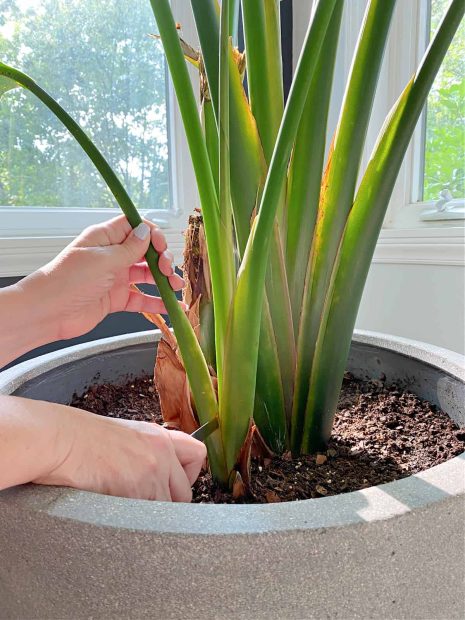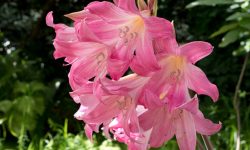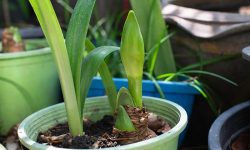The Bird of Paradise isn’t just a plant—it’s a bold statement of tropical elegance and radiant beauty. With its striking foliage and exotic blooms that resemble a bird in flight, this plant brings a touch of paradise into any space, instantly lifting the ambiance with its dramatic presence. But behind that grandeur lies a quiet truth: without proper care, especially pruning, even the most vibrant Bird of Paradise can lose its charm.
Pruning may seem intimidating at first, but it’s the key to unlocking your plant’s full potential. Whether you’re nurturing a mature garden specimen or growing one indoors, learning how to prune with purpose will help your Bird of Paradise flourish with stronger growth, cleaner lines, and more stunning blooms. This guide will walk you through every seasonal tip to prune like a pro—with confidence, clarity, and care.
Why Pruning Bird of Paradise Matters

Pruning your Bird of Paradise is more than just a cosmetic task—it’s a vital part of maintaining the plant’s health, structure, and long-term vitality. As the plant matures, older leaves naturally age, turn brown, or become damaged by wind, pests, or lack of light. If these leaves aren’t removed, they not only make the plant look untidy but can also drain energy that would otherwise go into producing new leaves and flowers. Strategic pruning redirects the plant’s energy to healthy shoots, encouraging fuller growth and better flowering.
Pruning also improves airflow and light penetration, which is essential for preventing fungal infections and keeping the dense foliage from becoming overcrowded. Regularly removing dead stems or spent blooms helps maintain an open structure, allowing each leaf and flower to develop without competition. Over time, this creates a more balanced, symmetrical, and visually appealing plant. Whether your Bird of Paradise grows outdoors in a garden or thrives as a striking indoor centerpiece, consistent pruning keeps it strong, manageable, and always ready to impress.
When Is the Best Time to Prune Bird of Paradise
The ideal time to prune a Bird of Paradise is in late winter to early spring, just before the plant enters its active growing season. During this period, pruning encourages fresh new growth and gives the plant a full growing cycle to recover, expand, and produce stunning foliage and blooms. By removing damaged or old leaves before spring, you create space and energy for new shoots to thrive.
In tropical or consistently warm climates where Bird of Paradise grows outdoors year-round, light pruning can be done throughout the year to remove dead or yellowing leaves as needed. However, for more intensive shaping or rejuvenation pruning—such as thinning out older stems or removing large sections of the plant—it’s best to wait until the cooler months are past and the days begin to lengthen again.
Avoid heavy pruning in fall or winter unless absolutely necessary, as the plant’s growth slows significantly and recovery will take longer. If grown indoors, the plant’s growth may be more subtle and steady throughout the year, but spring remains the best window for deeper maintenance. Proper seasonal timing ensures minimal stress to the plant while supporting vigorous and healthy regrowth.
Tools You’ll Need for Proper Pruning
To prune your Bird of Paradise effectively and safely, you’ll need the right tools to make clean, precise cuts without damaging the plant. The most essential tool is a pair of sharp, sterilized pruning shears for cutting through thin stems and leaves with ease. For larger or older stems, a pair of garden loppers or even a pruning saw may be necessary, especially with mature outdoor specimens that develop thick, woody stalks.
A clean pair of gloves helps protect your hands from tough foliage edges and any potential sap irritation. You’ll also want to keep rubbing alcohol or a bleach solution on hand to sterilize your blades before and after pruning. This prevents the spread of bacteria or fungal infections from one part of the plant to another. If working on a tall Bird of Paradise, especially one grown outdoors, a step stool or ladder may also be required to reach higher leaves safely.
Using the right tools not only makes pruning easier and more efficient but also helps minimize plant stress by ensuring every cut is clean and deliberate.
How to Identify What Needs to Be Pruned
Knowing what to prune on your Bird of Paradise is key to keeping the plant healthy, beautiful, and blooming consistently. Start by carefully examining the plant for dead, yellowing, or dried-out leaves. These not only detract from the plant’s appearance but also drain energy that could be used for new growth. Use clean, sharp pruning shears to remove these leaves as close to the base as possible.
Next, look for spent flower stalks—after blooming, they no longer serve a purpose and will not rebloom from the same stem. Removing them allows the plant to redirect energy toward new buds and foliage. Be sure to cut all the way down to the main stem without damaging nearby leaves.
Inspect the overall structure of the plant. If it looks overly crowded, tangled, or has crossing stems that rub against each other, it’s time to thin it out. Removing these overlapping stems improves air circulation and light penetration, which reduces the risk of fungal diseases and promotes healthier growth.
Also, consider the shape and size of the plant. If it’s outgrowing its space or becoming leggy and unbalanced, prune back older or taller stems to reshape the plant. Focus on removing the oldest stems first, as newer ones are more likely to produce fresh growth and flowers.
By regularly assessing your Bird of Paradise and removing the right parts, you not only keep the plant neat and attractive but also stimulate stronger, more vigorous development.
Pruning Bird of Paradise for Shape and Size Control
Shaping your Bird of Paradise not only improves its appearance but also helps maintain a manageable size—especially important for indoor plants or limited garden spaces. As the plant matures, it naturally spreads both upward and outward, often developing a bulky profile that can dominate its surroundings. Strategic pruning allows you to guide its form and prevent it from becoming unruly.
To control shape, start by removing any asymmetrical or awkwardly placed leaves that throw off the plant’s balance. Cut back stems that grow out at odd angles or crowd one side more than the other. Always make cuts close to the base of the stem or just above a leaf node to encourage clean regrowth. Thinning out the interior can also prevent the plant from becoming too dense in the center, which helps maintain a more open, architectural silhouette.
When it comes to size control, focus on cutting back the oldest and tallest stalks, especially those that have stopped producing strong leaves or flowers. Removing these allows younger stems to grow more vigorously, keeping the plant both lush and compact. Be careful not to cut too much at once; it’s best to reduce size gradually over multiple pruning sessions to avoid shocking the plant.
For outdoor Birds of Paradise that grow quite large, pruning may involve removing entire basal clumps or sections. In these cases, use loppers or a pruning saw for thicker stems. Always monitor regrowth and adjust pruning frequency based on how fast your plant rebounds. By pruning with both form and function in mind, you can enjoy a Bird of Paradise that fits beautifully in its space while staying bold, lush, and healthy.
Seasonal Pruning Tips for Better Results
Pruning your Bird of Paradise according to the seasons ensures optimal growth, faster recovery, and more dramatic results. Each time of year presents different opportunities to shape, rejuvenate, and prepare your plant for peak performance. Here’s how to adapt your pruning routine throughout the year for the best outcomes.
Spring: Stimulate New Growth
Spring is the ideal time for major pruning. As temperatures rise and the plant exits winter dormancy, it enters an active growth phase. Use this period to remove old, dead, or damaged leaves and flower stalks, as well as to thin overcrowded sections. If you’re reshaping or reducing size, spring pruning gives your Bird of Paradise the entire growing season to bounce back stronger and fuller.
Summer: Maintain Shape and Health
During summer, the plant grows quickly, so light maintenance pruning helps keep it looking tidy. Trim back any wayward stems or leaves that disrupt the plant’s shape. Remove faded flowers to encourage more blooming, and watch for signs of sun damage or heat stress. Pruning in small doses during this time prevents the plant from becoming too dense or lopsided.
Fall: Prepare for Dormancy
In early fall, focus on cleaning up the plant before growth slows. Remove declining leaves and any spent flower stalks, but avoid heavy pruning. Doing too much cutting before winter can leave your Bird of Paradise vulnerable to cold damage or disease. This is also a good time to thin the base of the plant for improved airflow during the cooler months.
Winter: Minimal or No Pruning
Winter is the plant’s rest period, especially in cooler climates. Avoid pruning unless absolutely necessary—for instance, removing a diseased or broken stem. Heavy pruning during this time can stress the plant and interfere with its natural cycle. Instead, use winter to observe the plant’s structure and plan your spring pruning strategy.
By tailoring your approach to each season, you’ll help your Bird of Paradise grow vigorously, stay balanced in shape, and bloom more reliably. Seasonal pruning isn’t just a task—it’s a rhythm that keeps your tropical beauty thriving year-round.
What to Do After Pruning
Once you’ve finished pruning your Bird of Paradise, the aftercare steps are just as important as the pruning itself. Begin by thoroughly cleaning up all cuttings, dead foliage, and debris around the base of the plant. This reduces the risk of pests and fungal issues and allows the plant to breathe and recover in a tidy environment.
Inspect the freshly cut areas to make sure they’re clean and free from jagged edges. If any cuts appear torn or uneven, use sterilized shears to make a cleaner cut—this helps prevent infection. Avoid applying water directly to open wounds for a day or two to let them dry and callous over.
Hold off on fertilizing for at least a week after pruning. Let the plant adjust before giving it a nutrient boost. Resume regular watering, but don’t overdo it—pruned plants typically need slightly less water while they recover.
Place the plant in a spot with ample bright, indirect light to support new growth. If the conditions are warm and consistent, you may start to see new leaves or even flower stalks form within a few weeks. This post-pruning period is a great time to monitor your Bird of Paradise closely and make small adjustments to light, humidity, or watering to help it rebound stronger than before.
Encouraging More Blooms Through Pruning
Final Thoughts on Bird of Paradise Pruning
Pruning Bird of Paradise isn’t just about maintenance—it’s a long-term investment in the beauty and vitality of your plant. Whether you’re growing it indoors or out, knowing when and how to prune can dramatically improve its health, structure, and blooming potential. With a bit of seasonal attention and technique, your Bird of Paradise will remain lush, elegant, and full of life all year long.






